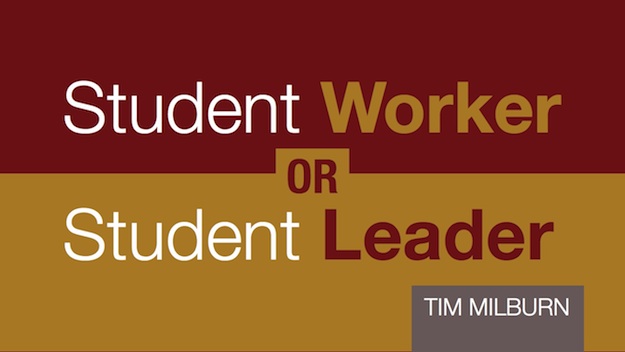Quick Summary
Most student leadership programs tend to elect or select students to do certain tasks. The students are put in these positions because they have a strong skill set in a certain area. But a student doesn’t have to do everything by him or herself. Each student leader can make a conscious decision to BE a student leader and not a student worker. It’s a matter of approach, perspective, and focus. While both a student leader and student worker have work that needs to get done, they go about it in different ways. This session will identify those differences and challenge student leaders to do what it takes to move toward leading.
Presentation Outline
During this presentation, I will describe some of the ways student leaders can distinguish themselves as leaders vs workers. It’s not that a leader is more important than the worker. It’s that these students have been elected or selected to lead. With that in mind, each section will provide practical ways a student can approach each situation with a leadership mindset.
Some of the key differences include:
- A student worker can work alone. A student leader can’t work without the help of others.
- A student worker has to do it all well. A student leader has to find the best person for the task.
- A student worker feels primarily responsible for the task. A student leader feels primarily responsible to the people.
- A student worker is focused on the moment. A student leader is focused on the big picture.
- A student worker is celebrated for individual effort. A student leader is celebrated for team effort.
- A student worker moves on when the task is complete. A student leader motivates others to step in when the year is complete.
Target Audience
This presentation is intended for student leaders who are working with a team of people. I would recommend it for a high school or college-age audience. It is appropriate for both faith-based and non faith-based organizations.
Possible Formats
This presentation is designed as a workshop. The ideal workshop length is two hours. It can also be delivered as a keynote of 45-60 minutes in length.
Intended Outcomes
- Participants will learn the key differences between a student worker and student leader.
- Participants will walk away with many practical ideas about how to get others involved.
- Participants will identify the areas where they are more apt to be a student worker and learn how to transition toward being a student leader in that area.
Other Presentations

